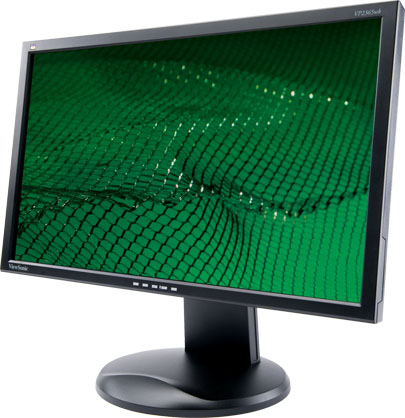
Don’t Get Your Nematics All Twisted In a Bunch
By Wayne Maruna
November, 2010
It is sometimes said that ignorance is bliss. Personal experience suggests that adage is often true.
My 20” LCD monitor was showing signs of being near its end-of-life. Figuring I would keep a step ahead of the grim electronics reaper, I went looking for a replacement, this time in the 22” to 24” range. Shopping for a monitor, I reasoned, involved asking the same two basic questions I use when shopping for a car or a sandwich: is it big enough, and am I willing to pay the price. I measured my desk space to see what would fit, then went to do some price shopping.
I started at my favorite virtual computer supply stores, newegg.com and amazon.com, where comments left by customers reveal real user experiences with products. But the more I looked and the more I learned, the more I realized this was not going to end with a quick trip down to Staples. I was starting to see terms I was unfamiliar with, like color gamut, and abbreviations like TN, MVA, IPS, and CCFL. Oh, I knew about things like contrast ratios and brightness specs, but manufacturers are known to play fast and loose with measurement techniques that are less than exactingly precise. In other words, put no stock in the claims printed on the box.
I
used to think that, like Gaul, all of monitor-land is divided into two parts:
the big, heavy CRT monitors, and the thin, light LCD monitors that have pretty
well supplanted CRTs. While that is basically true, I found out that not all
LCDs are created equal. There are several different types of LCD panel
technologies, with the most widespread being TN (for ‘twisted nematic’), VA
(“vertical alignment”), and IPS (“in-plane switching”, which involves neither
aisle nor window seats.)

If you’re interested in what a nematic is, you can go read here: http://en.wikipedia.org/wiki/Nematics.
That article contains, in a single paragraph, the highest concentration of words I have never seen before, so don’t expect a definition from me. But with a name like ‘twisted nematic’, you might expect each TN LCD panel to come wrapped in an Iron Maiden t-shirt. That would consume a lot of t-shirts, because “TN” panels are by far the most prevalent panel used in LCD monitors for one basic reason: they are the least costly. In fact, TN technology is so common that most manufacturers don’t even call it out in their specs. The other main benefit is response time, the speed with which a pixel can shift its color – generally between 2 and 5 milliseconds for TN panels. The downsides to TN technology include color reproduction, viewing angles, and contrast ratios – the difference between the whitest white and the blackest black. Someone has mathematically calculated that a ‘true color’ display can produce as many as 16.7 million colors, of which the human eye can supposedly discern about 10 million. Can’t say, never sat down and counted. TN technology is ‘limited’ to about 262,000 colors. Considering that when I was given the 48-pack box of Crayola Crayons in first grade I thought I was Mr. Big Shot, it might seem like this is much ado about nothing, but people serious about photo editing might well find a TN panel lacking.
At the high end are the IPS panels. These excel at color reproduction which tends to be consistent across a wide angle of display. The Apple iPad uses IPS panel technology. Those serious photo editors want IPS panels. But IPS panels also involve trade-offs, chiefly in the areas of response time – generally between 6 and 16ms – and cost. People who are avid gamers might notice ghosting in fast action if response times exceed 8ms. In part because they use twice the transistors of TN panels, IPS panels are significantly higher in cost as a rule, and hence tend not to take up a lot of precious retail shelf space, since relatively few consumers are willing to pay the incremental price (roughly 2X and up) for color accuracy and wide viewing angles on a computer monitor whose main task is to reveal ‘You’ve Got Mail’.
The VA panels tend to sit in between the TN and IPS panels, sharing some of the benefits and deficiencies of both. Response times are worse than TN but better than IPS, and color accuracy is better than TN but worse than IPS. They tend to exhibit a phenomenon called color shifting as the viewing angle changes. This drives some users nuts, while others barely notice. Cost also sits in between TN and IPS. In my shopping I found zero models specifying VA panels, neither S-PVA nor MVA, which are sub-groups of the broader VA category.
Since I use a 5.1 speaker system that requires that I keep one speaker in the center under the monitor, I needed a model with height adjustment. Talk about a limiting factor – there are few relatively large LCD monitors that offer height adjustments. Most monitors have low fixed height panel placement, though most offer some degree of tilt.
As to how I ultimately cast my consumer vote, suffice to say only time will tell if I would have been happier in blissful ignorance, but I definitely would have put a smaller dent in the old credit card.